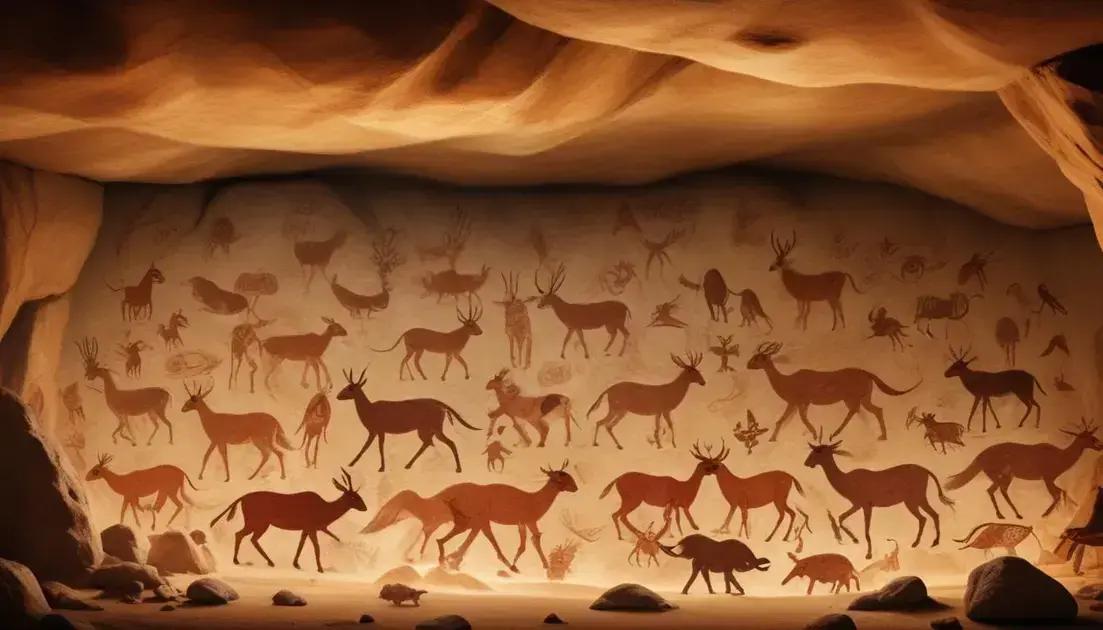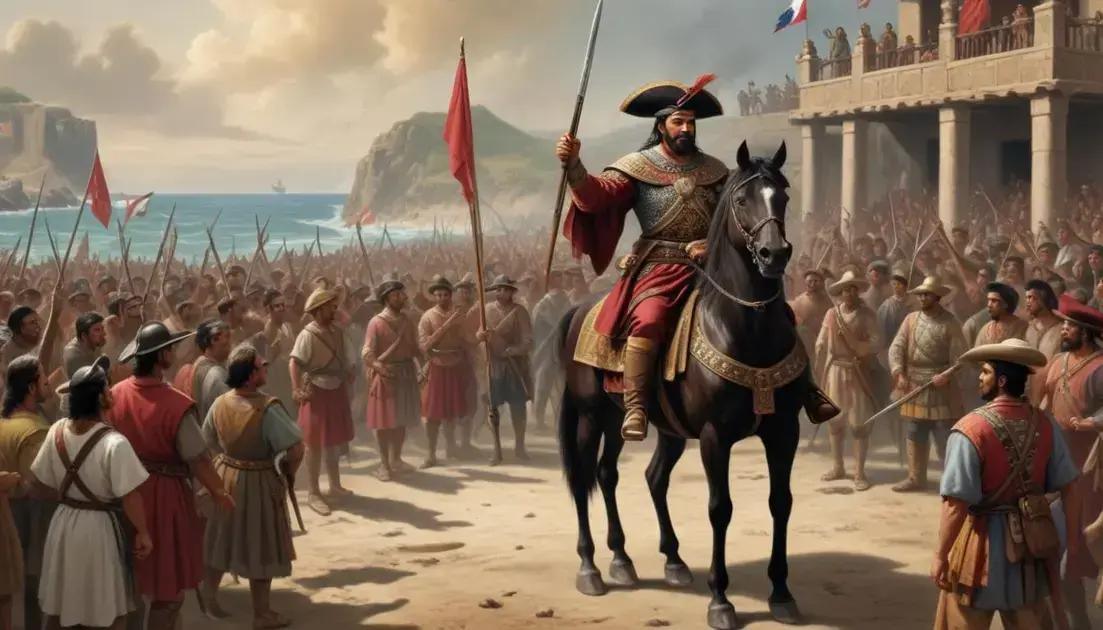
Tupac Amaru II: Indigenous Revolt Against Colonial Rule
The revolt led by Tupac Amaru II marked a significant moment in history, as indigenous people united against Spanish colonial rule. This uprising, which began in 1780, was a reaction to unfair taxation and brutal treatment, inspiring future generations to fight for justice and equality. The legacy of resistance left by Tupac continues to influence indigenous rights movements today, emphasizing the importance of cultural identity and community solidarity in the ongoing struggle for fairness.
Indigenous revolt marked a turning point in the fight against colonial oppression in the Vice-Reino de Lima. Let’s delve into this fascinating chapter of history.
Background of Tupac Amaru II
Tupac Amaru II was born in the late 18th century in Peru. He came from a mixed heritage of indigenous and Spanish blood. His real name was José Gabriel Condorcanqui. Growing up, he saw the tough life of his people under Spanish rule. They faced heavy taxes and unfair treatment.
The Spanish crown imposed many laws that hurt the indigenous population. These laws made life harder, limiting their rights and freedoms. Many indigenous people struggled to survive and lost their lands to wealthy landowners.
The Early Life of Tupac Amaru II
As a young man, Tupac Amaru II became a leader in his community. He took pride in his heritage and wanted to protect his people’s rights. He was also well-educated, which helped him communicate their struggles. His visions for change grew stronger each day.
His grandfather was the last native governor of the area, giving Tupac a sense of history and duty. Through his upbringing, he learned about the traditions and beliefs of his people. This knowledge fueled his passion for justice.
The Seeds of Rebellion
By the 1780s, tensions were rising. Many indigenous people were angry about taxation and oppression. Tupac Amaru II decided that it was time to take action. He began rallying followers to confront the Spanish authorities.
It wasn’t just a local issue; it was part of a bigger fight against colonial powers across South America. Tupac believed his movement could inspire other indigenous groups. His hope was to reclaim freedom and justice for his people.
Taxation and colonial abuses
The Spanish colonial system imposed heavy taxes on the indigenous people. These taxes were often harsh and unfair. Indigenous farmers were forced to give up a large portion of their harvest to the authorities. This left them struggling to feed their families.
Additionally, the Spaniards enforced strict labor laws. Indigenous men were often forced to work in mines or on plantations. This system, called “mita,” demanded long hours with little pay. Many became exhausted due to these harsh conditions.
The Impact of Taxation
High taxes made life very difficult for the indigenous communities. Families faced hunger and poverty. Many revolted against these unjust taxes. The resentment built up over time, leading to anger and frustration.
People felt they had no choice but to fight back. They began gathering and planning ways to resist the Spanish rulers. The feeling of unity grew among the oppressed groups.
Colonial Abuses and Their Consequences
Colonial abuses didn’t just involve taxes. Land grabbing was common, where Spanish colonizers took away the lands of indigenous people. This further deepened their hardships and struggles.
People were losing everything. As the abuses continued, the call for change became stronger. Tupac Amaru II emerged as a voice for resistance, pushing for justice for his people.
The outbreak of revolt
The outbreak of revolt began on November 4, 1780, in Peru. Tupac Amaru II and his followers launched a rebellion against Spanish rule. They aimed to end the harsh taxation and cruel treatment by the colonizers.
It started in a small town called Tinta. There, Tupac Amaru captured a Spanish official. This act sparked excitement and hope among the indigenous people. Many joined his cause to fight for their rights and freedom.
The Call to Arms
Tupac Amaru II made a powerful speech to rally his supporters. He spoke about justice and equality for all indigenous people. His words inspired many to rise against the oppressors.
As news of the revolt spread, more people joined in. They united against the common enemy—the Spanish authorities. The rebellion was not just a fight for freedom; it became a struggle for dignity.
Key Events During the Revolt
Over the next few months, the uprising grew. Tupac Amaru II led a series of battles across the region. His forces managed to capture several towns and cities. However, the Spanish responded with military force.
Despite their growing strength, the rebels faced many challenges. They lacked proper weapons and training. As the revolt continued, struggles between sides intensified, leading to fierce fighting across the land.
Impact on indigenous communities
The impact of the revolt on indigenous communities was significant. Many people felt hope and empowerment. They saw Tupac Amaru II as a strong leader fighting for their rights.
As the rebellion spread, it united many indigenous groups. They began to realize their strength in numbers. This sense of unity fueled more resistance against colonial rule.
Change in Social Dynamics
The uprising challenged the existing social order. Indigenous people started to take more control of their lives. They demanded fair treatment and equality under the law.
These changes opened discussions about their future. Many began to reject the Spanish narrative that dominated their lives. They wanted to create their own identity and culture.
Long-Term Effects
The revolt led to both positive and negative outcomes. While the immediate rebellion was suppressed, it planted seeds of resistance. The spirit of the revolt inspired future generations.
Indigenous communities continued to fight for their rights. They learned valuable lessons about organizing and standing together. Even after the revolt, their struggle for justice did not end.
Legacy of resistance
The legacy of resistance from Tupac Amaru II’s revolt is powerful. It left a mark on history and inspired future movements. The fight for justice continued long after the rebellion ended.
Many indigenous communities remembered Tupac Amaru II as a hero. They admired his courage and dedication to their rights. His name became a symbol of freedom and resistance against oppression.
Inspiration for Future Generations
Tupac’s story motivated many later leaders. His struggle sparked interest in equality among indigenous and non-indigenous people. Activists saw the value of standing up for what is right.
In Peru and beyond, the spirit of rebellion lived on. New movements emerged that echoed his fight, showing the power of unity.
The Continued Fight for Rights
Today, the legacy of resistance is visible in ongoing struggles. Indigenous groups continue to advocate for land rights and cultural recognition. They honor Tupac’s fight by defending their communities and traditions.
Numerous events are held to celebrate his life and contributions. His legacy reminds us that the struggle for justice is ongoing and important.
Conclusion
In summary, the legacy of Tupac Amaru II’s revolt is vital for understanding the ongoing fight for justice. His leadership inspired many and showed the importance of standing up against unfair treatment. Indigenous communities continue to honor his memory through their efforts to protect their rights and culture.
The themes of unity, resilience, and courage from that time still resonate today. As we reflect on this legacy, it reminds us that the struggle for equality is important for everyone. Together, we can learn from the past and work towards a brighter future.


